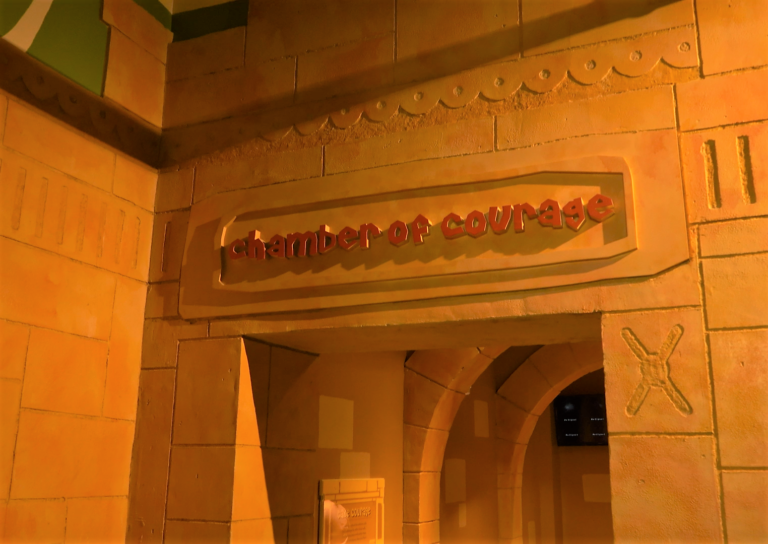Indiana Jones is your classic Hollywood Hero. A whip-cracking, wit-smacking adventurer with seemingly boundless bravery. While part of the series’ time-tested appeal is the thrilling adventures: traversing through jungles, navigating booby-traps, traveling all over the world, and handling ancient artifacts, a large contributing factor is who they crafted Indy to be with his charismatic and arrogant personality, his knowledge of history, language, and ancient civilizations, and his fears. You know what I’m talking about – “Why did it have to be snakes?” Throughout the films, Indiana Jones must confront his ophidiophobia over and over again, and in doing so, is painted as a more likable and realistic adventurer.
What are you afraid of?
A common interview inquiry and a terrible first date question.
Everyone is afraid of something. It has been an unnegotiable condition of life on Earth from the time humans hit the scene, hunting wild beasts and fighting for survival, to today, with fewer physical threats but arguably more psychological ones.
Fear can be a tide-pool or a deep-sea trench, and courage is our only defense against it.
We often speak on courage with a broad banality, in vague overarching clichés that somehow, as cliches do, often ring true. One thing that has been established in our many years of analyzing courage is that it is not the absence of fear but acting in the midst of it. Being courageous does not necessarily vanquish your fears, but it does help manage them. In the end, it’s all about management.
How Does It Work?
The amygdala is the part of your brain that sounds off your alarm bells. It is in charge of all your emotional responses, but in the case of fear, activates your fight-or-flight by telling your brain to release stress hormones that increase your heart rate and prepare your body to either flee to safety or engage in combat.
In an experiment testing courage, participants with a fear of snakes were put in an MRI machine and asked to move a live snake closer to their heads. They were asked repeatedly to choose whether to move the snake closer or further away.
From the results, researchers found that when their fear reached a certain threshold, the subgenual anterior cingulate cortex sends nerve projections into the amygdala in an attempt to suppress the bodily fear responses.
This internal competition between the amygdala and the subgenual anterior cingulate cortex enables courageous acts.
So now you know how it works, but how do you manage it?
6 Tips for Being Courageous
- Honest Confrontation – The management of fear begins with the acknowledgment of it. Our fears can also be quite the labyrinth, so it is important to find and tackle the source.
- Is It Worth Overcoming? – It sounds like a silly question, but there are a few things to consider when it comes to courage. The amygdala triggers a fight-or-flight response often for good reason. Sometimes, fear keeps us safe. Sometimes, fear causes us to take more time to evaluate an initial impulse. Before confronting and taking action to manage fear, ask “Is my fear preventing me or protecting me?”
- Willingness to Act – Courage, at its core, is an action word, even if the action is not physical. Identify what your purpose is and what you can control, and then clearly picture your actions leading to success.
- Welcome Failure – If I could hold a spider once and then be totally cool seeing it scurry from one corner of my kitchen into the black hole crevice behind my stove and not be at all stressed about where it went or why it’s after me, I would feel invincible. Unfortunately, it doesn’t work that way. You have to confront your fear over and over again. Your fear may squash your courage time and time again… until it doesn’t.
- Celebrate Achievements – This one is simple and has few to no exceptions. Every time you act despite or in the presence of your fear, you celebrate. That’s it.
- Develop a Pattern – You have to habitually exercise courage to strengthen it. The more you consciously confront your fears, the better you will be at managing them.
The Rainforest in the Museum of Natural Curiosity is designed for adventures, mini Dr. Jones. Inside, they can lead an expedition through the twists and turns of the jungle climber, handle artifacts and treasure at the Trading Post, and test their bravery by crawling through the dark and reaching into the unknown in the Chamber of Courage.
While their fears outside the Museum may be much bigger, the Chamber of Courage encourages individuals to face smaller, more common fears to work on developing the habit. When you are better able to manage your fears and live courageously, you gain a larger grasp of what you are capable of, you increase your self-confidence, you experience less stress, you become more aware of what is true vs. what you tell yourself to stay comfortable in a fearful state, and you inspire others to be more courageous as well.
It’s ok to be afraid, but there is so much promise in being courageous.
Sign up for the Thanksgiving Point Exploration Exclusive to get monthly blog updates!




